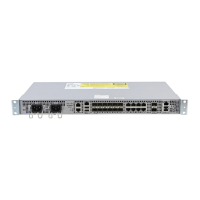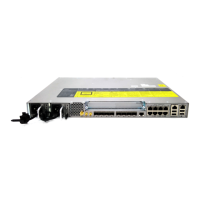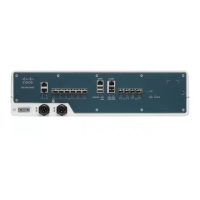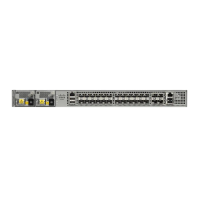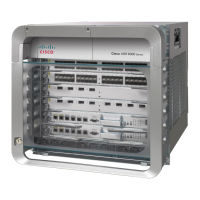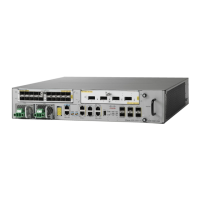PurposeCommand or Action
Enters global configuration mode.configure terminal
Example:
Router# configure terminal
Step 2
Configures an RSPAN source session number and enters RSPAN
source session configuration mode for the session.
monitor session RSPAN_source_session_number
type rspan-source
Step 3
Example:
Router(config)# monitor session 1
type rspan-source
•
RSPAN_source_session_number—Valid sessions are 1 to 14.
• rspan-source—Enters the RSPAN source-session configuration
mode.
Specifies the RSPAN session number, the source interfaces and the
traffic direction to be monitored.
source {single_interface slot/subslot/port|
single_vlan [rx | tx | both]
Step 4
Example:
Router(config-mon-rspan-src)# monitor
•
single_interface—Specifies the Gigabit Ethernet or Ten Gigabit
Ethernet interface.
◦ slot/subslot/port—The location of the interface.
session 1 source interface gigabitethernet
0/2/1 tx
• single_vlan—Specifies the single VLAN.
• both—(Optional) Monitors the received and the transmitted
traffic.
• rx—(Optional) Monitors the received traffic only.
• tx—(Optional) Monitors the transmitted traffic only.
Associates the RSPAN source session number session number with
the RSPAN VLAN.
destination remote vlan rspan_vlan_ID
Example:
Router(config-mon-rspan-src)# destination
remote vlan2
Step 5
• rspan_vlan_ID—Specifies the Vlan ID.
rspan_vlan_ID is the RSPAN BD that is configured
under the EFP or port which carries the RSPANd
traffic.
Note
Restarts the interface.no shutdown
Example:
Router(config-mon-rspan-src)# no shutdown
Step 6
Exists the configuration.end
Example:
Router(config-mon-rspan-src)# end
Step 7
Carrier Ethernet Configuration Guide (Cisco ASR 920 Series)
392
Configuring Switched Port Analyzer
Configuring RSPAN Source Session

